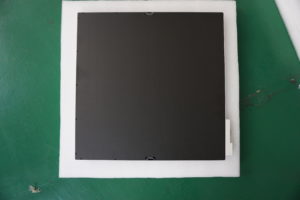Comparison of different flat panel detectors
There are two main performance indicators for evaluating the quality of
flat panel detectors: Detective Q uantum E fficiency (DQE) and spatial resolution. DQ E determines the resolution of flat panel detectors for differences in tissue density; spatial resolution determines the resolution of tissue microstructure. Investigating DQ E and spatial resolution can evaluate the imaging capabilities of flat panel detectors.

In indirect-converted flat panel detectors, there are two main factors that affect DQE: the coating of the scintillator and the transistor that converts visible light into an electrical signal.
First, the materials and processes of the scintillator coating affect the ability of the X-ray to convert into visible light, thus affecting DQ E. There are two common scintillator coating materials: cesium iodide (C sI ) and bismuth oxysulfide (Gd2O 2S ). The ability of cesium iodide to convert X-rays into visible light is stronger than sulfur oxidation but at a higher cost; processing yttrium iodide into a columnar structure can further improve the ability to capture X-rays and reduce scattered light. The detectors coated with sulphur sulphide are fast in imaging speed, stable in performance and low in cost, but the conversion efficiency is not as high as that of yttrium iodide coating.
Author:Alina
